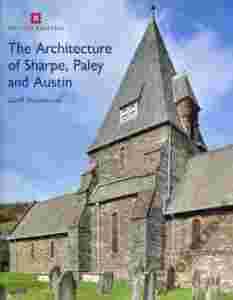|
One of England's greatest Victorian architectural
practices was based, not in London, but in the
relatively quiet town of Lancaster. For just over a
century the leading practice in the area was that of
Sharpe, Paley and Austin. It was founded, just at the
start of the Victorian Gothic Revival, by the
remarkable, multi-talented Edmund Sharpe - architect,
engineer, businessman, politician and winner of the
Royal Institute of British Architect's Royal Gold Medal
for his work in architectural history. E G Paley
developed the practice and took on in 1867 the man who
elevated it to greatness - Hubert Austin, described as
an architect of genius by Pevsner. The firm established
a national reputation, especially for its many fine
churches, ranging from great urban masterpieces to
delightful country ones, which are imbued with the
spirit of the Arts & Crafts movement. The practice
was extraordinarily prolific and took on commissions for
almost every imaginable building type - country houses,
railways, schools, factories, an asylum and commercial
premises in addition to the churches.The book explores
with the aid of Austin's great-grandson, not only the
firm's buildings but also a fascinating web of family
and professional interconnections which provide the
backdrop to the story. It is richly illustrated,
including family photographs never previously published.
This treatment will appeal to architectural historians,
students of the architecture of the Victorian and
Edwardian eras and social historians. |
|

